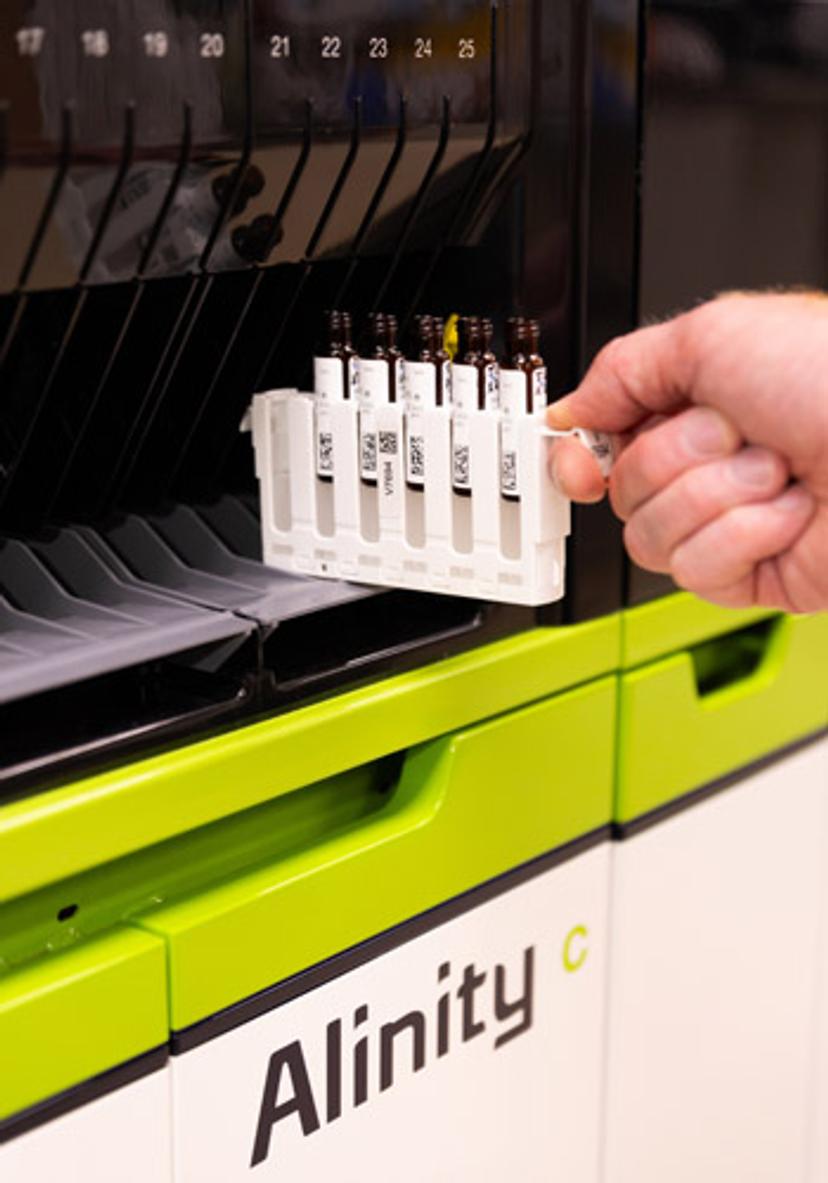Advancements in quality control enable clinical labs to re-evaluate acceptable results for patient diagnostics
Director of Laboratory Services shares how the right quality control materials can help to improve the accuracy, efficiency, and reliability of patient diagnostics in the clinical lab
27 Sept 2023

Clinical laboratories are responsible for conducting tests and analyses that play a crucial role in disease diagnosis, treatment monitoring, and disease surveillance. As these test results directly influence patient care decisions, maintaining a high level of quality control is essential as it ensures lab results are accurate, precise, and reliable. By implementing stringent quality control measures, laboratories can detect and prevent errors, minimize variability, and maintain the highest standards of patient diagnostics.
In this SelectScience® interview, we speak with Jon Gronbach, Director of Laboratory Services at Holyoke Medical Center (HMC), who supports the quality control team at the hospital lab. Gronbach not only oversees the daily work of the lab, helping provide solutions to daily challenges and analyzing data trends to identify potential issues, but also provides strategic help to continually improve the quality control lab’s capabilities and ultimately improve patient care. Here, Gronbach discusses the importance of quality control materials in supporting accurate and precise clinical laboratory testing procedures, why the HMC lab chose to switch to new quality control materials from Technopath Clinical Diagnostics, and how this change has made a big difference to the lab’s success and daily operation.
The role of quality control in the clinical lab
Good quality control materials play a vital role in ensuring the accuracy and precision of all clinical laboratory testing procedures such as blood analysis, kidney function tests, and other cellular and chemical analysis. These materials, designed to mimic patient samples, are used to monitor the performance of instruments, reagents, and processes, so that issues can be identified and resolved before they impact patient results.
Placing great importance on improving quality control results, ensuring ease of use for its team, and decreasing the amount of waste created, Gronbach and the lab leadership team at HMC must continuously review the materials they are using to ensure these fundamental pillars are met. Most recently, this has led to a decision to transition to Technopath Clinical Diagnostics’ Multichem QC materials, paired with Abbot’s Alinity ci Series instrument, despite a long and positive relationship with their previous quality control supplier.

"Technopath’s quality control materials have improved the quality of our results by improving ease of use and minimizing touchpoints that can introduce errors when running daily quality controls. Plus, by reducing the amount of handling, quality control materials can go back into refrigerated storage quicker so that they remain stable for longer,” Gronbach shares. “In the clinical chemistry lab for example, you often have to count drops during quality control procedures, which is inefficient and a waste of skilled labor. These new materials give us the ability to load the material directly onto the instrument, eliminating the need for drop counting and improving efficiency. This change also supports the laboratory's quality initiatives by reducing errors caused by pouring the wrong amount.”
Alongside greater ease of use, Technopath’s quality control materials offer significant environmental benefits. The use of barcoded vials eliminates the need for disposable pipettes and cups to transfer the quality control material from the bottle to analyzer cups. It also removes the dead volume associated with pouring samples into secondary containers. As a result, the reduction in plastic waste not only aligns with sustainability goals but also saves on costs.
Gronbach shares that his team are also extremely impressed with Technopath's cloud-based quality control software, Infinity, which complements the Multichem QC product line. “We were originally following a highly manual process, relying on paper documentation whenever quality control was performed. Paper records had to be reviewed weekly and the supervisors had the arduous task of examining all the documents for trends on a monthly basis. This was all a time-consuming and labor-intensive process,” he explains. “However, with the introduction of the Infinity software, we were able to electronically monitor trends and shifts, and identify technicians who repeatedly encountered challenges. This allowed us to provide targeted coaching and guidance to improve their efficiency. The Technopath team was also exceptional in their support, travelling a long way to train all of the HMC technicians on the Technopath software in person. Normally, introducing new products triggers concerns about increased workload. But, in this case, our team eagerly awaited the implementation of the new software, knowing it would eliminate the burdensome paper-based processes we had previously relied on.”
We transitioned to this new quality material for three reasons, cost, ease of use, and its environmental considerations. If used correctly, Technopath’s Multichem QC materials can reduce your plastic waste by 80%.
Jon Gronbach
Director of Laboratory Services, Holyoke Medical Center
A turning point for clinical scientists and technicians
Gronbach explains how the world of quality control is becoming increasingly exciting as technology advances, encouraging a re-evaluation of traditional approaches. “As we continue to reduce errors, we can gradually begin to commit the reclaimed time to reassess the margins of some of those existing practices, like the long standing ± 2 standard deviation rule, which can create "popup fatigue" and make quality control feel like a burden rather than a valuable tool,” Gronbach explains. “Our goal is to transition quality control into a tool that truly enhances laboratory accuracy and efficiency. However, some lab scientists can be hesitant to embrace change, despite being part of a field that constantly evolves. Change management plays a crucial role in addressing this resistance, particularly with technicians who have been accustomed to the same rules for 35-40 years. Thankfully, the partnership with Technopath has been immensely helpful in supporting these changes.”
Looking forward, Gronbach expects partnerships like these will continue to play a significant role in the evolution of quality control in the clinical lab. By collaborating with instrument manufacturers and material suppliers, quality control laboratories can achieve better quality results, ease of use, and overall efficiency.
